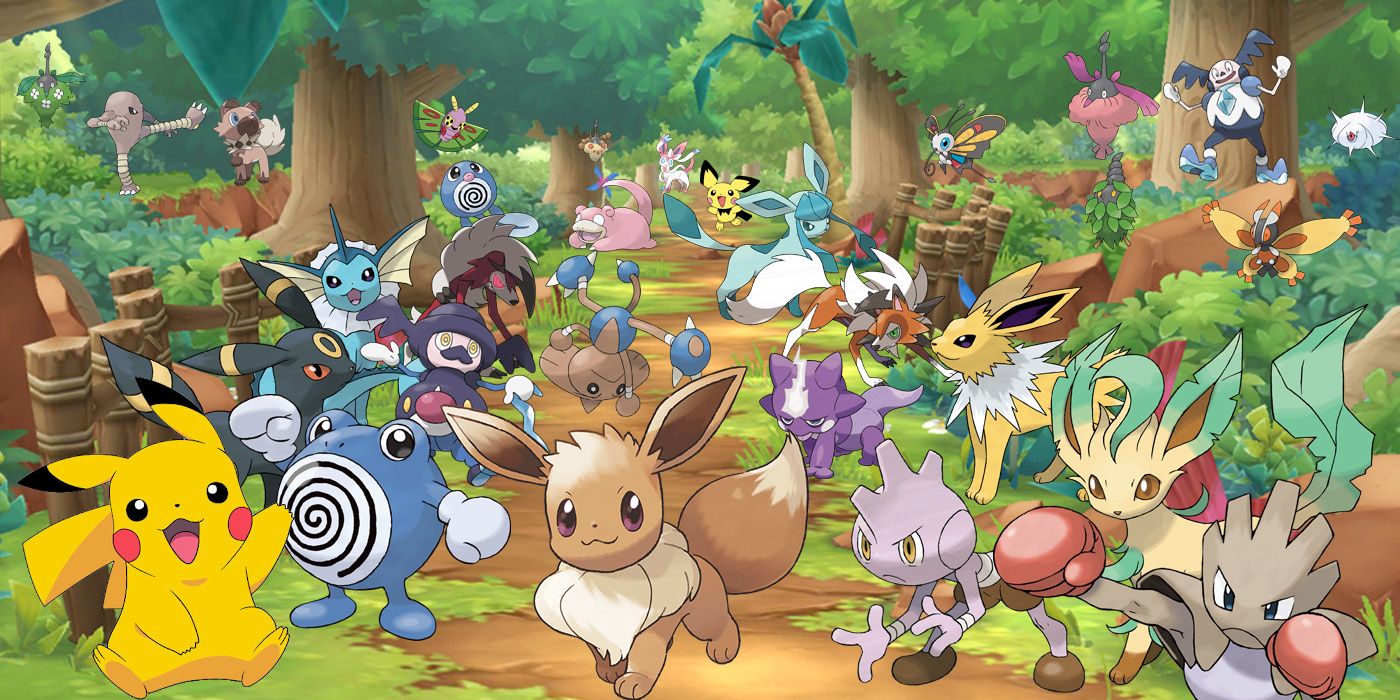
Evolution plays a huge role in Game Freak's Pokemon series; serving not only as a means of making a Pokemon stronger, but also obtaining a brand new form of it. Back in the days of Pokemon Red and Blue, evolving a Pokemon by trading it or using an evolution stone was about as complicated as it got, while each Pokemon typically had no more than two additional forms (if any).
RELATED: Pokemon: 10 Of The Biggest Mysteries From The Series Fans Still Can’t Figure Out
These days, however, some of the evolutionary lines found throughout the series have become incredibly complicated; with multiple branches and increasingly bizarre methods of inducing evolution added into the series. Not all of them are quite beyond comprehension, but there are perhaps one or two of them that would have left even the great Charles Darwin scratching his head.
10 Toxel
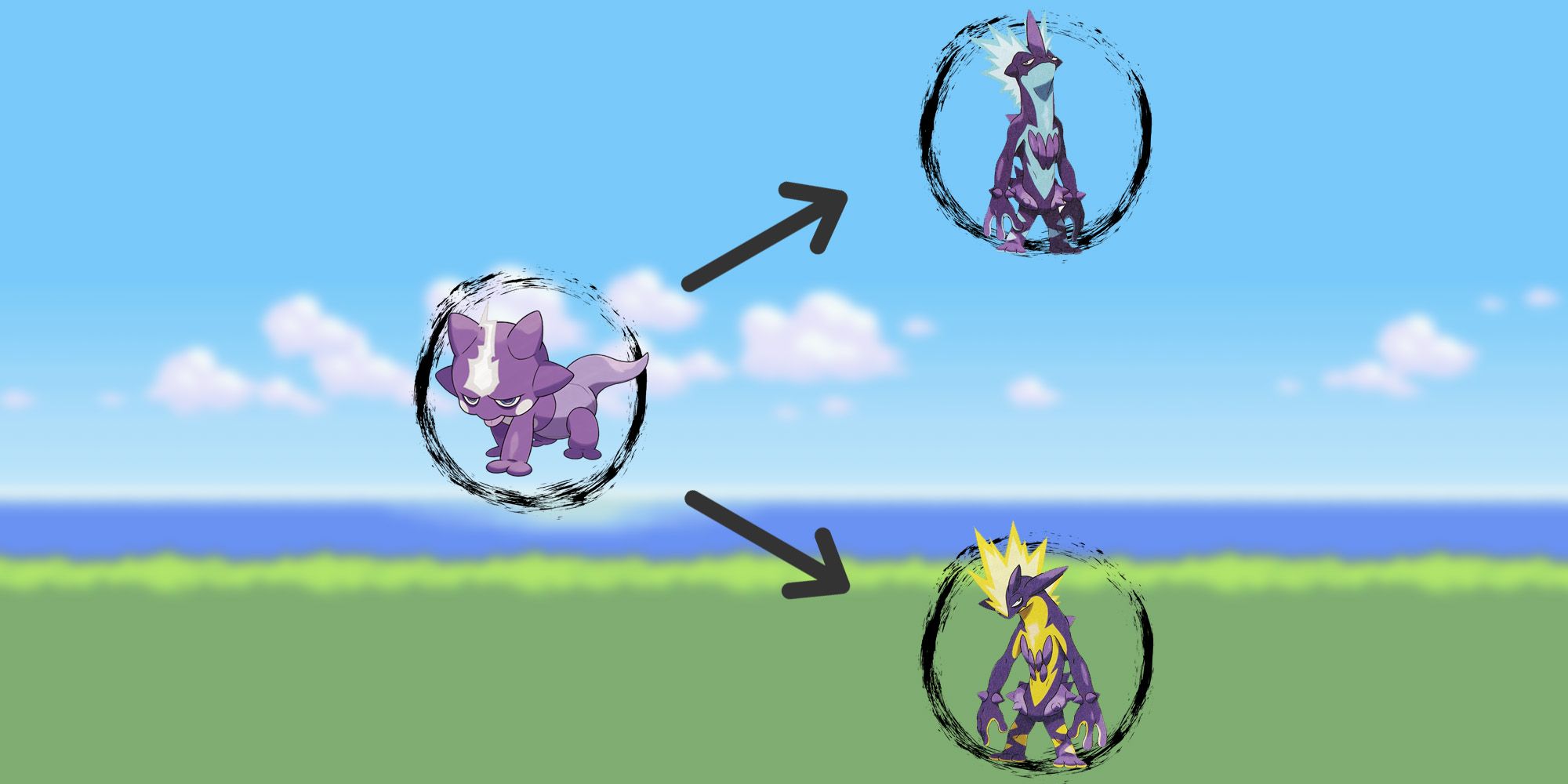
There were quite a few baby Pokemon added to the Pokedex following their introduction in Pokemon Gold and Silver. After Gen 4, however, there was a rather long gap without any new additions. In fact, it would not be until Gen 8 and the introduction of Toxel that players would finally get a new baby Pokemon to raise; and it's quite a unique one at that.
Which form of Toxtricity a player's Toxel will evolve into upon reaching level 30 is entirely dependent on the Pokemon's nature. Bashful, Bold, Calm, Careful, Gentle, Lonely, Modest, Mild, Quiet, Relaxed, Serious or Timid Toxels will evolve into the Low Key Form of Toxtricity. If the Toxel has an Adamant, Brave, Docile, Hardy, Hasty, Impish, Jolly, Lax, Naive, Naughty, Rash, Sassy, or Quirky nature though, it will instead evolve into the Amped Form.
9 Rockruff
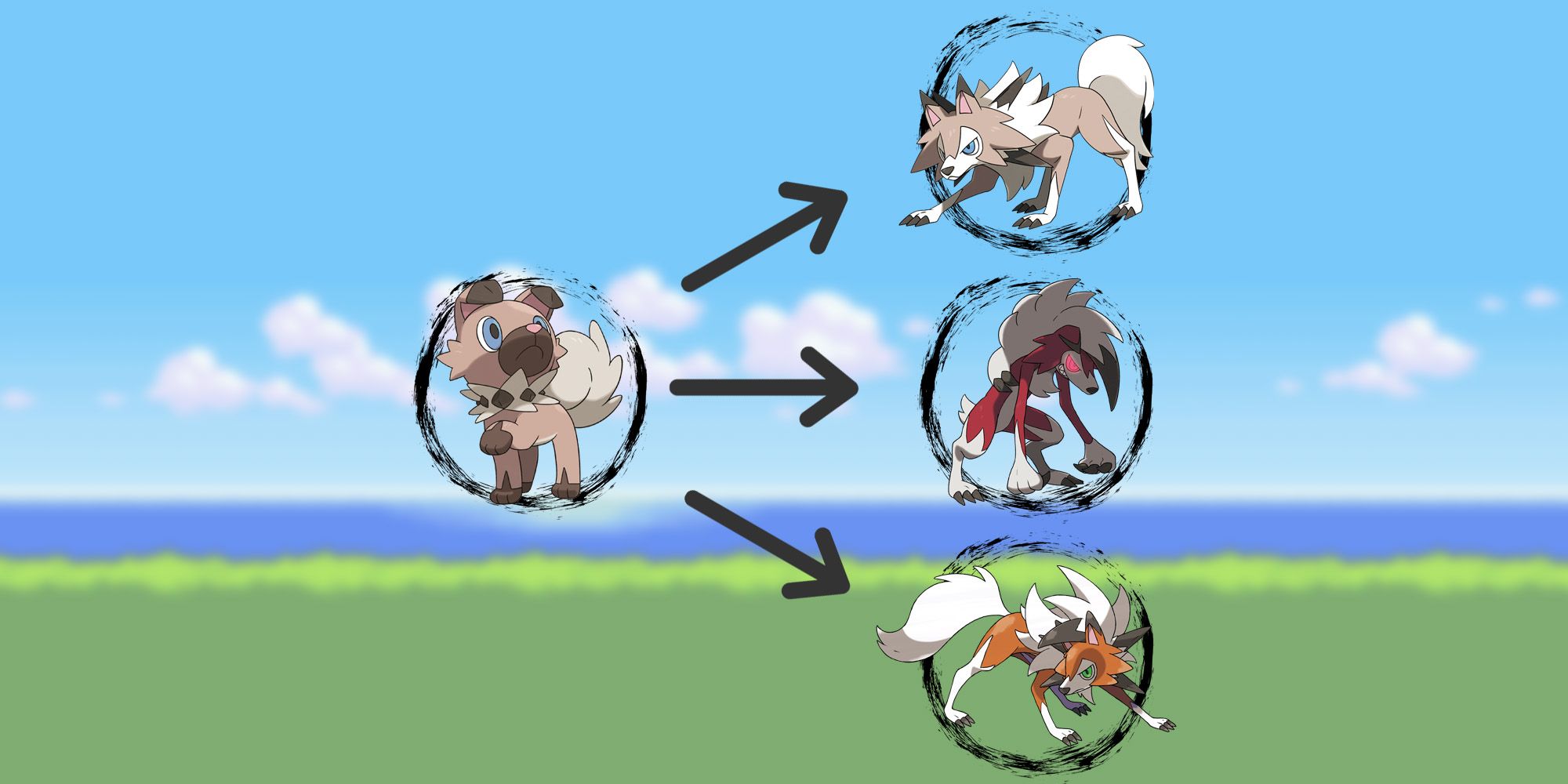
In many ways, Rockruff is like a simpler version of Eevee, although without anywhere near as many evolutionary branches. The rock type Pokemon has three possible evolutions and these are determined by the time of day that it evolves. All three of them effectively lead to the same Pokemon, although Lycanroc has three different forms which each have their own distinct appearances and movesets.
Its Midday form can be obtained by reaching level 25 during the day time and its Midnight form is acquired by instead evolving Rockruff at night. Lycanroc's third and final form requires Rockruff to have the Own Tempo ability and then evolve between either five and six PM in the Gen 7 games or seven and eight PM in Gen 8.
8 Tyrogue
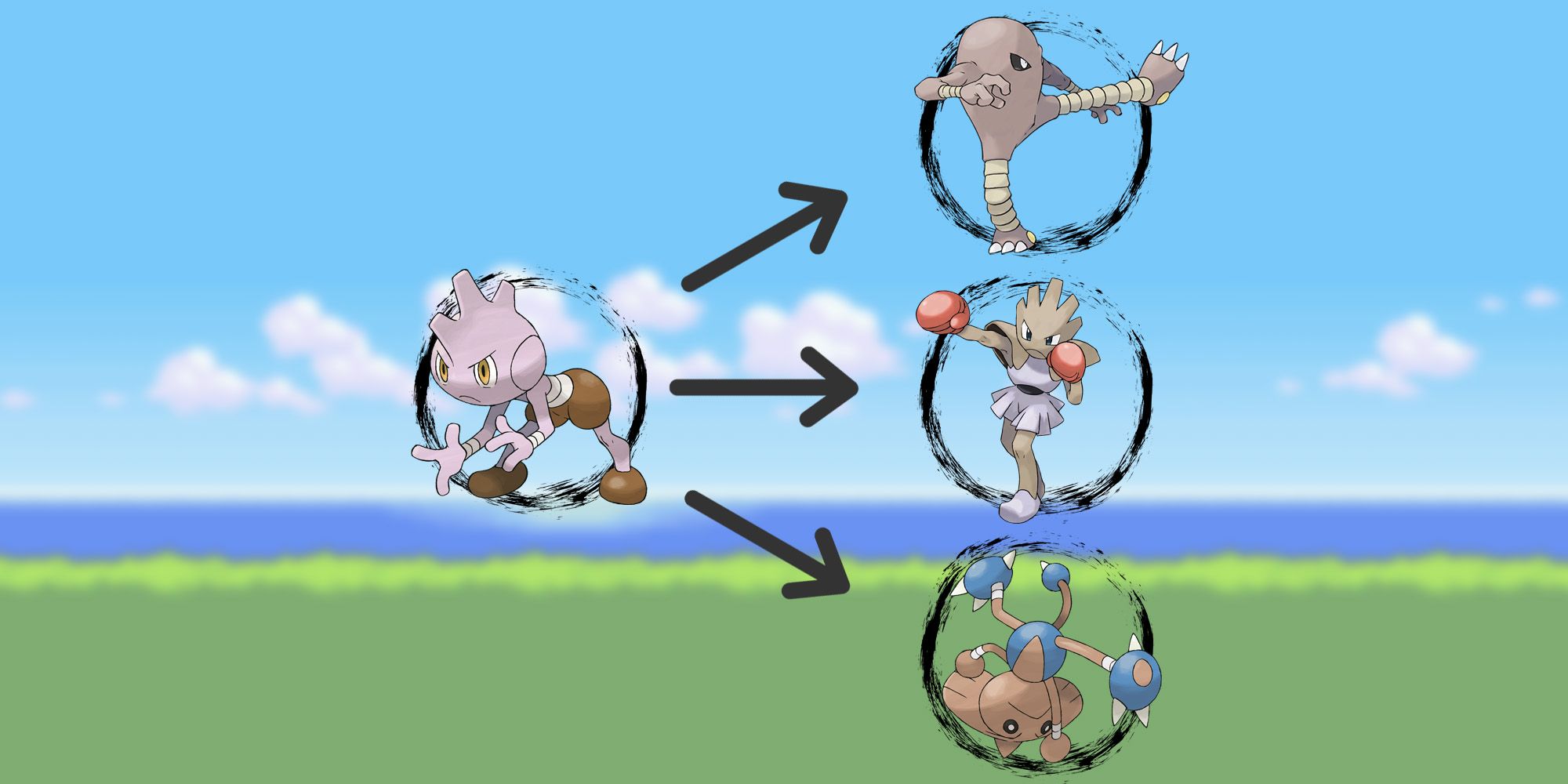
There were plenty of choices to be found in the first generation of Pokemon games; starting, of course, with whether to play through the red or Blue version of the game. Players next had to choose their starter Pokemon and then later, whether they wanted the kicking machine that is Hitmonlee or the powerful puncher Hitmonchan. This choice became a little less straightforward, however, when the second generation of Pokemon games arrived.
RELATED: 10 Weird Things You Didn't Know About Baby Pokemon
Not only did Game Freak introduce the baby Pokemon Tyrogue, but also a third evolutionary form in the shape of Hitmontop. Rather than using evolutionary stones or something simple to determine what Tyrogue would evolve into though, the developers instead tied it to the Pokemon's attack and defense stats. If Tyrogue's attack is higher than its defense when it reaches level 20, it will evolve into a Hitmonlee, but if its defensive stat is higher it will instead become a Hitmonchan. The only way that it can evolve into a Hitmontop is if its attack and defense stats are equal.
7 Pichu
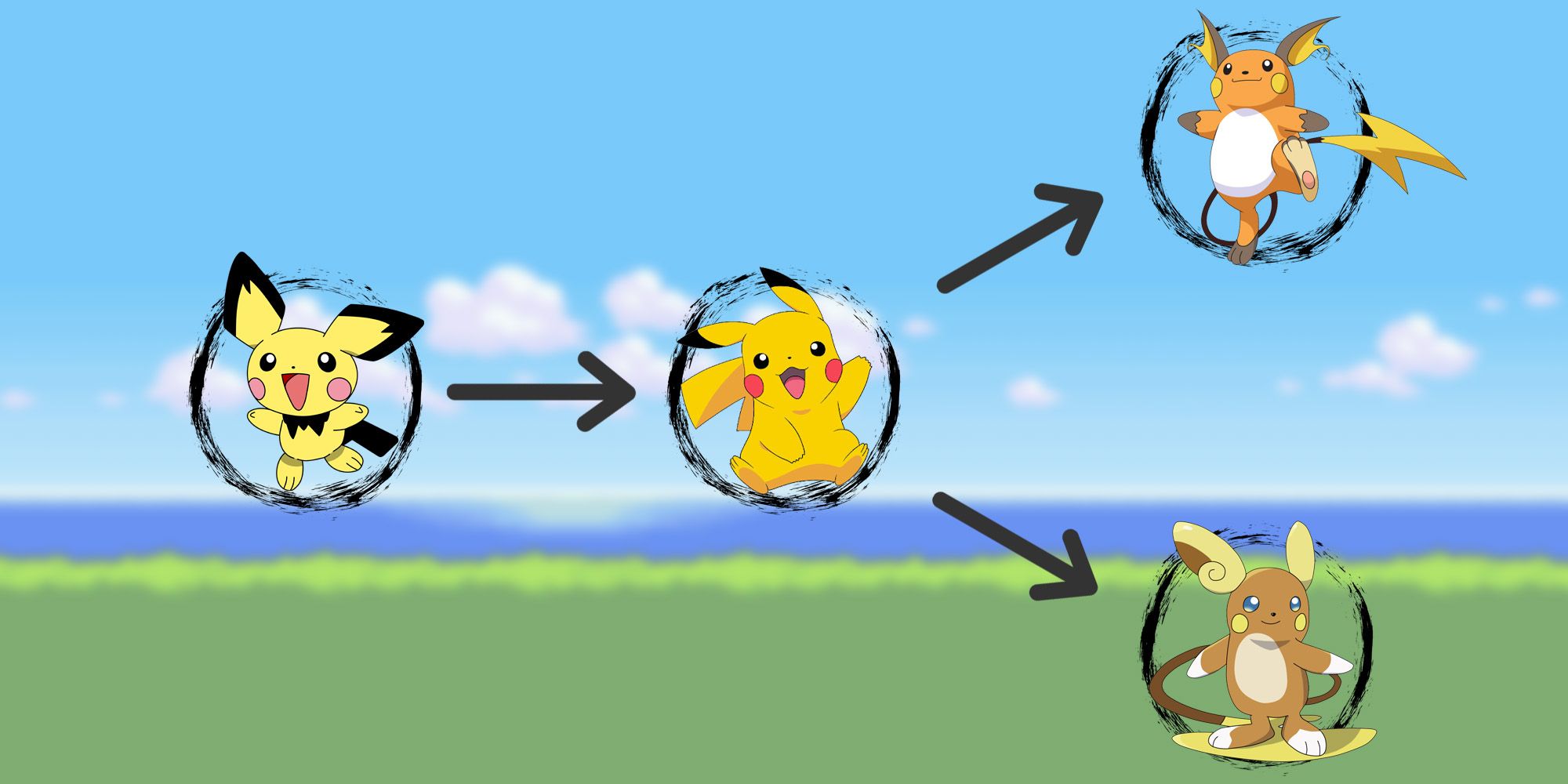
Having started out with a fairly straightforward evolutionary line, Pikachu's evolutions have become increasingly complex since the days of Gen 1. In the original games, players could evolve their Pikachu by using a Thunder Stone, which would see it turn into a Raichu. This all changed in Gen 2 though, with the introduction of baby Pokemon.
A pre-evolved form of Pikachu known as Pichu was added to the games, with players needing to level up their Pichu with the highest possible friendship stat in order to evolve it into a Pikachu. Gen 7 made things even more complex with the addition of Alolan Raichu, which can only be obtained by evolving a Pikachu with a Thunder Stone while in the Alola region.
6 Poliwag
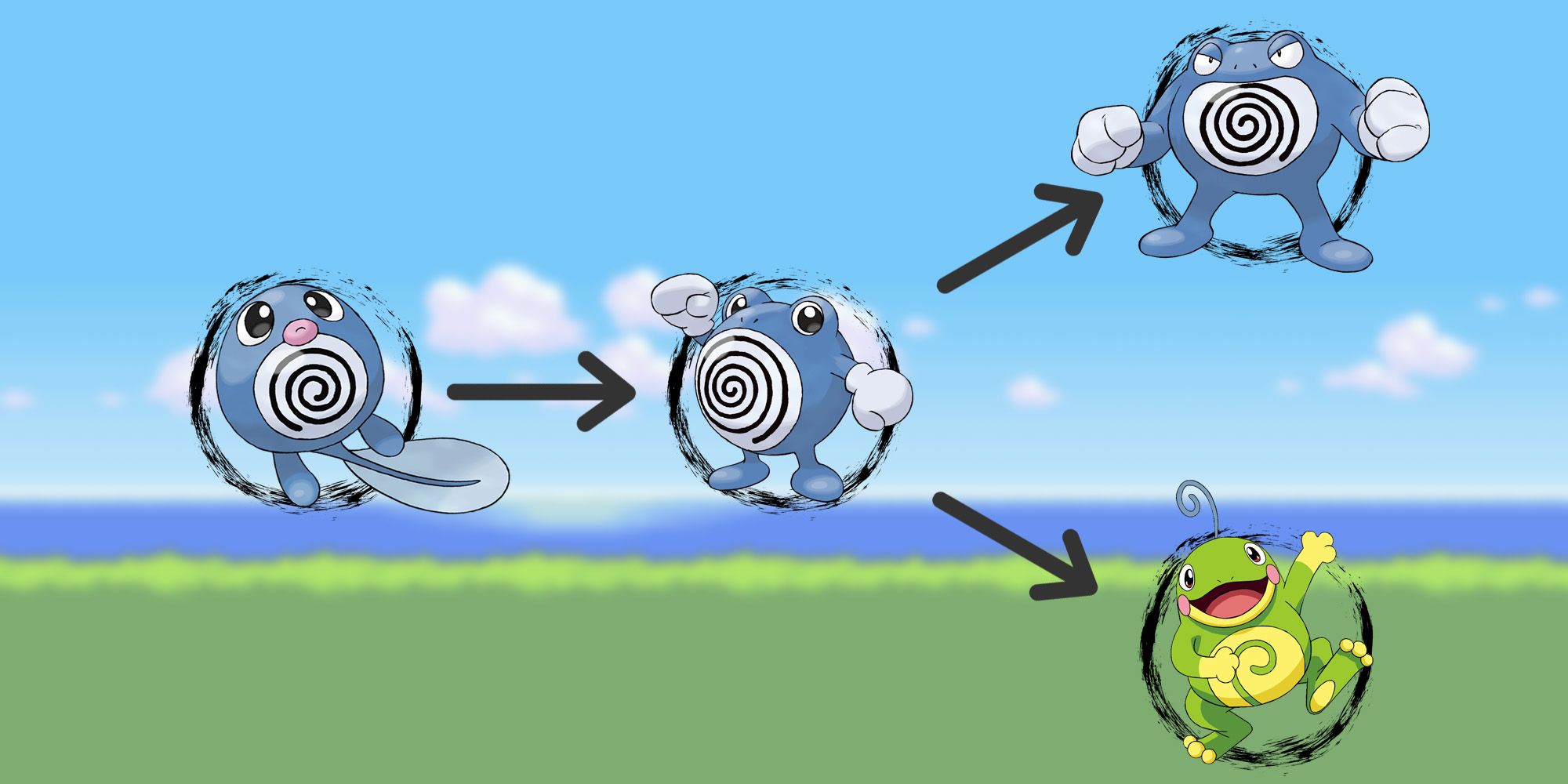
When Poliwag first arrived in Gen 1, its evolutionary line was fairly simple; with the tadpole-like Pokemon evolving into Poliwhirl at level 25 and then Poliwrath when introduced to a water stone. That changed a little though with the introduction of an additional evolutionary form in Gen 2.
Now, rather than having to evolve Poliwhirl into a Poliwrath, it's possible to instead evolve it into the pure water-type Pokemon Politoed by trading Poliwhirl with a friend. It's not quite that simple though, as the Poliwhirl also needs to be holding the King's Rock item at the time of the trade.
5 Mime Jr.
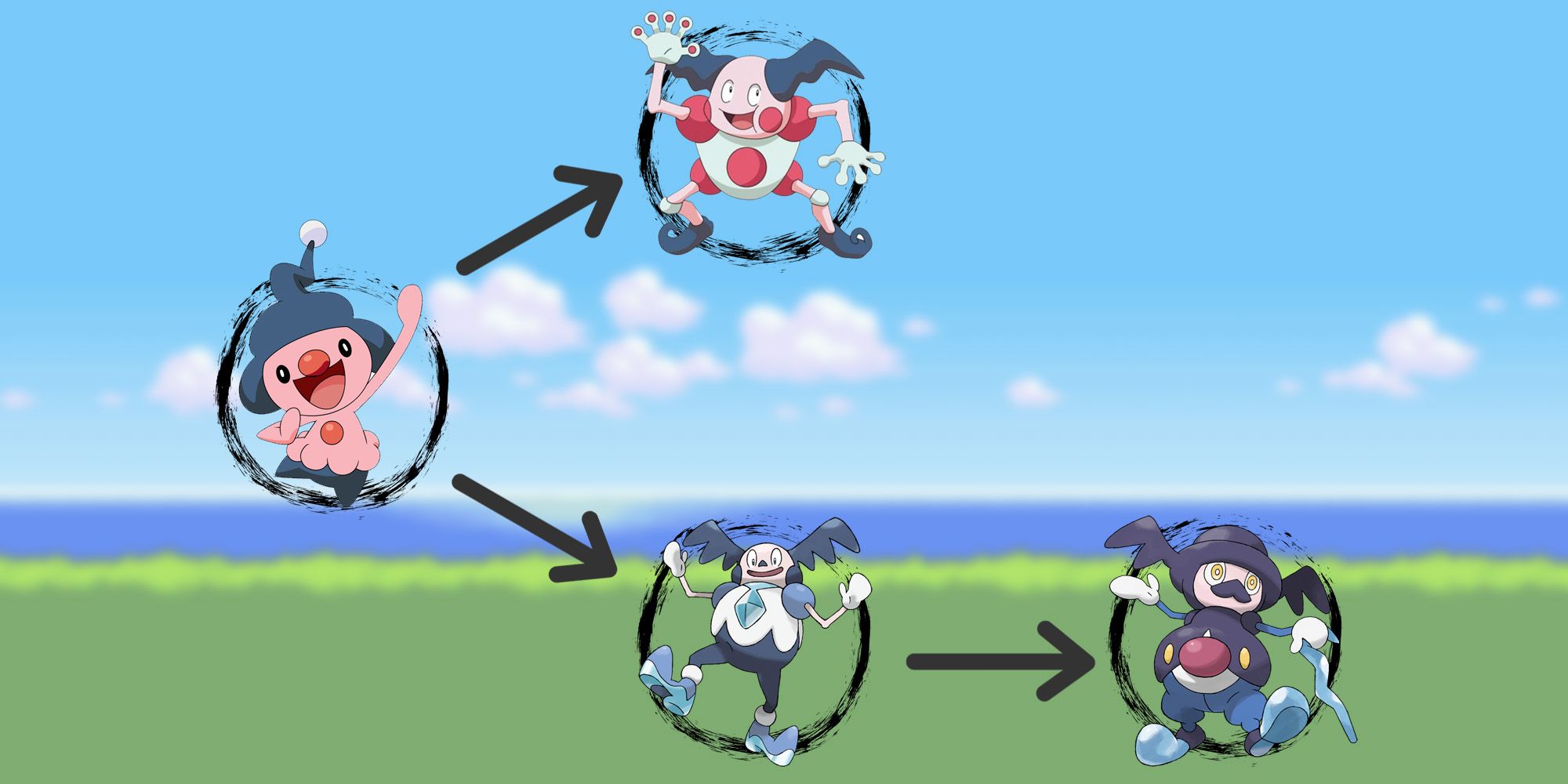
Back when Pokemon first broke onto the scene, there was no Mr. Mime evolutionary line to speak of; only Mr. Mime himself. That all changed in Gen 4, however, with the introduction of Mime Jr. Even then though, it was far from complex; with the baby Pokemon evolving into his adult form by leveling up while knowing Mimic.
RELATED: 10 Pokemon That Seem Overpowered In The Anime (But Are Much Weaker In The Games)
Where things started to get a little complicated was in Gen 8 with the introduction of a Galarian form of Mr. Mime and an additional evolutionary stage. Mr. Rime can only be obtained by getting a Galarian Mr. Rime up to level 42, while Galarian Mr. Mime himself can only be acquired by evolving Mime Jr. in the Galar region.
4 Wurmple
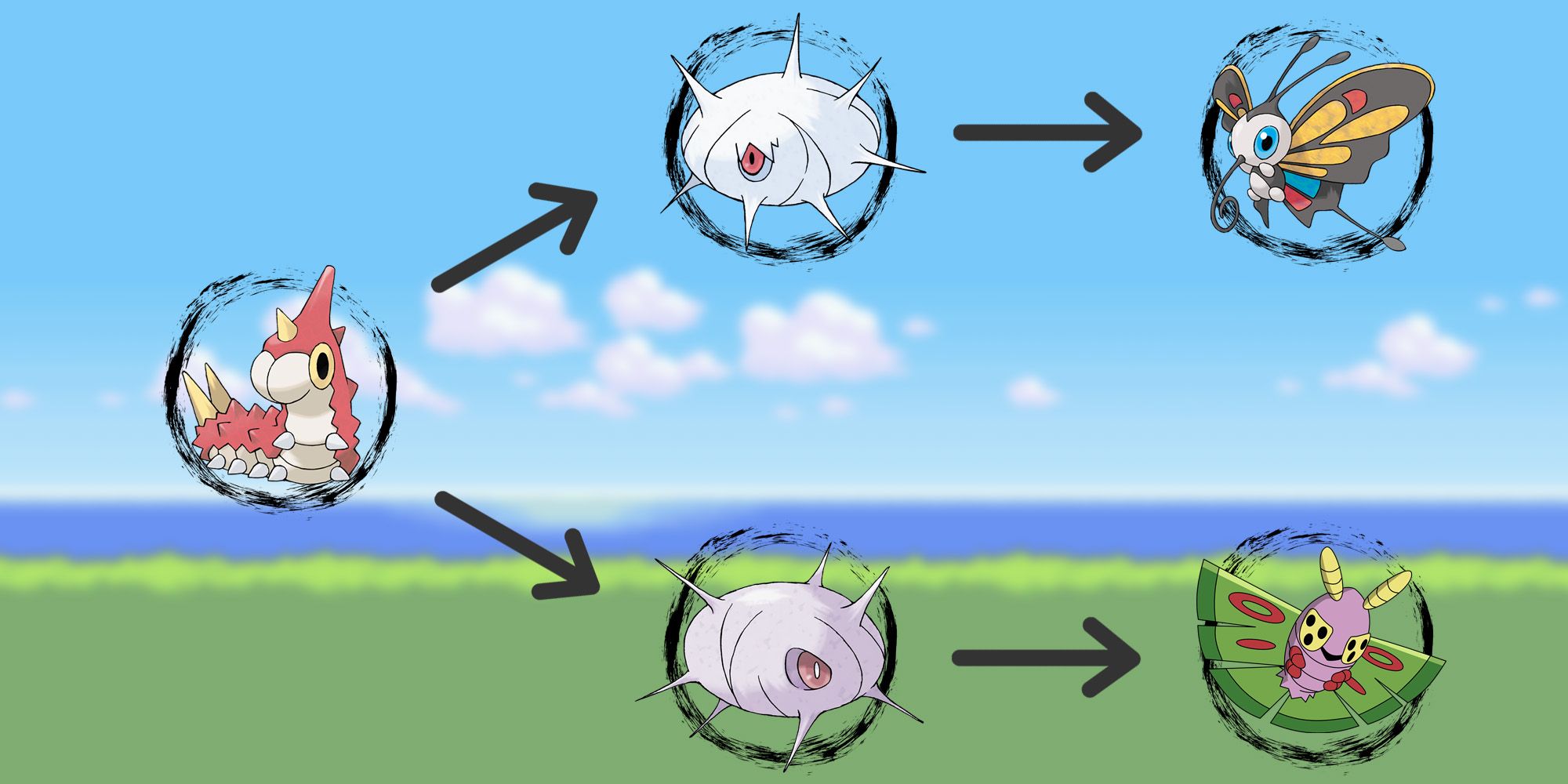
While Gen 1's moth and butterfly-like Pokemon each have their own distinct evolutionary lines, their Gen 3 equivalents are instead evolved from the same Pokemon. Bizarrely though, there's no way for players to tell which branch of the evolutionary line they'll be taking until the first evolution takes place.
Whether or not Wurmple will evolve into a Silcoon or a Cascoon depends on the Pokemon's personality value; a stat which players have no way of seeing without hacking the game. Thankfully, this evolution takes place at level 7, meaning that they at least won't have to wait too long before finding out. The new Pokemon will evolve again just three levels later, so obtaining Beautifly and Dustox isn't actually that difficult, although it may require a few attempts.
3 Slowpoke
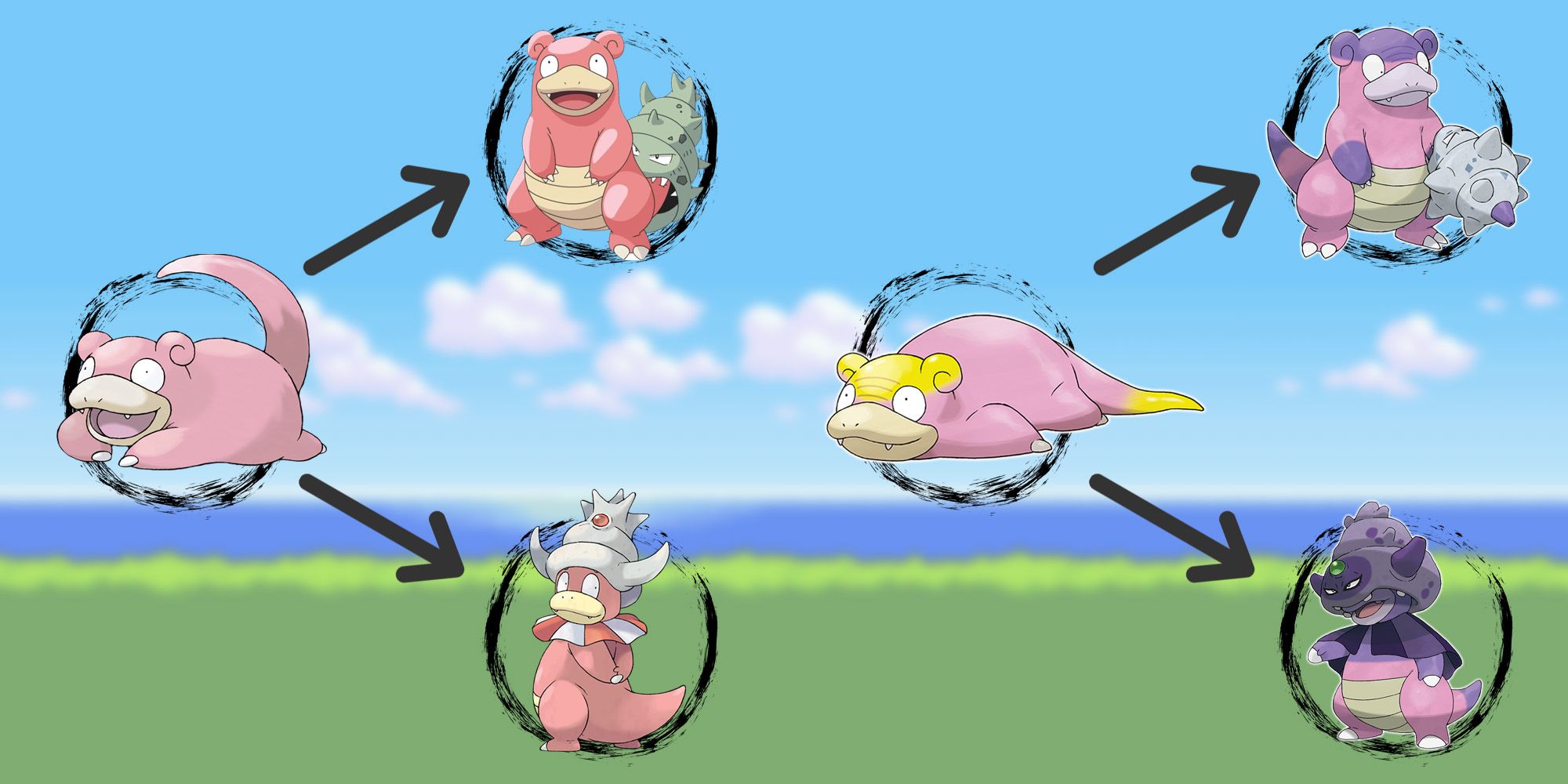
When it comes to Pokemon evolutionary lines that have grown in complexity over the years, few can rival Slowpoke's. In Gen 1, it simply evolved into a Slowbro when it reached level 37. The introduction of Slowking in Gen 2 changed things up a little though, with players now able to trade their Slowbro while holding a King's Rock to instead obtain this new, slightly superior form.
Upon their arrival in Galar, however, players were greeted with a Galarian form of Slowpoke; which in turn meant Galarian forms of each of its possible evolutions. Rather than evolving via the same methods, however, players instead need to use one of two newly added consumable items in order to trigger the change. Using a Galarica Cuff on a Galarian Slowpoke will cause it to evolve into Galarian Slowbro while using a Galarica Wreath will instead lead to it becoming a Galarian Slowking.
2 Burmy
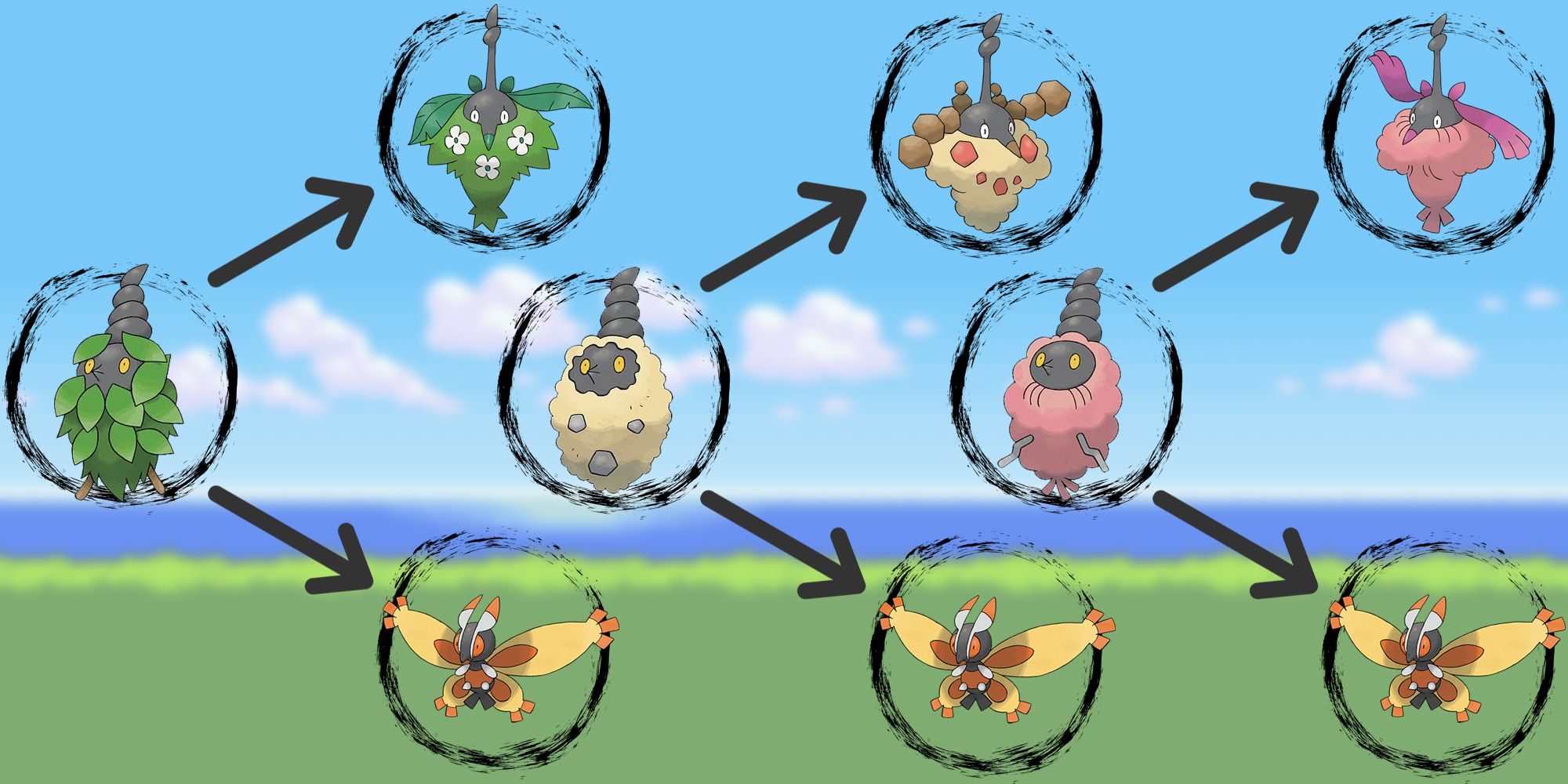
There may only be two stages to Burmy's evolutionary line, but its able to evolve into any one of four unique forms depending on a few different variables. The first of these is the Pokemon's gender whilst the second is its cloak; the latter of which changes regularly to reflect the last area in which the Pokemon battled.
If the Burmy is male, it will always evolve into a Mothim at level 20. If it's female, however, its second stage form and secondary typing will depend on the Burmy's cloak at the point when it hits level 20. The resulting Pokemon, Wormadam, will always be a bug-type Pokemon, but its secondary type will be grass if it evolves with its plant cloak, ground if it evolves with its sandy cloak and steel if it evolves with its trash cloak.
1 Eevee
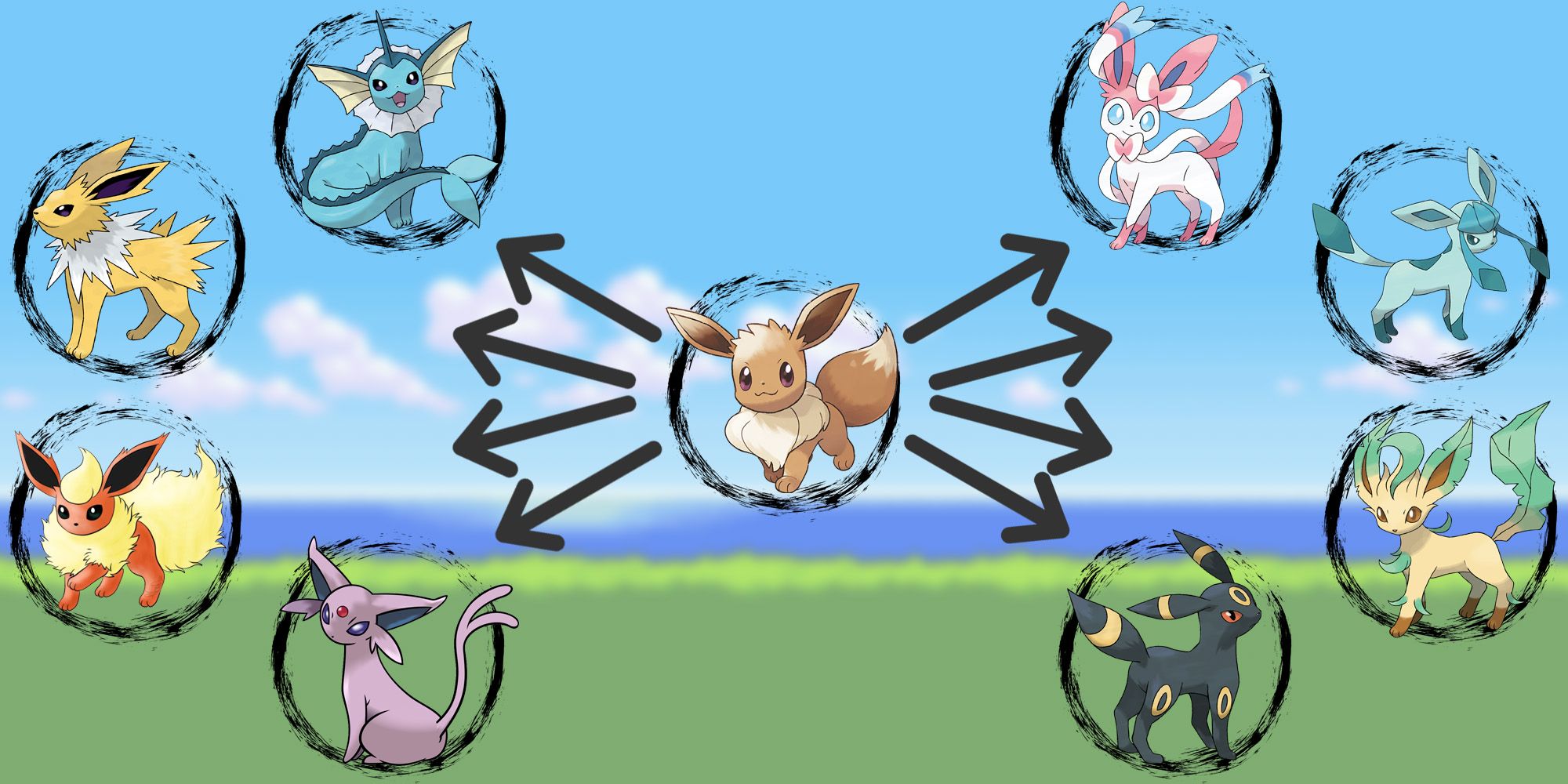
When it comes to complicated evolutionary lines, Eevee has always been ahead of the curve. Its three distinct evolutions found in the very first Pokemon games were incredibly simple though when compared to the Pokemon's most up to date evolutionary tree.
There are currently eight unique Pokemon that an Eevee can evolve into, with Espeon, Umbreon, Leafeon, Glaceon and Sylveon all joining Vaporeon, Jolteon and Flareon in the years that followed Gen 1. Five of these forms require the use of an elemental evolution stone while the others instead rely on things like affection and friendship stats and the time of day that the evolution takes place.
NEXT: Pokemon: The Best Feature From Each Generation That Should Be Included In Gen 9

